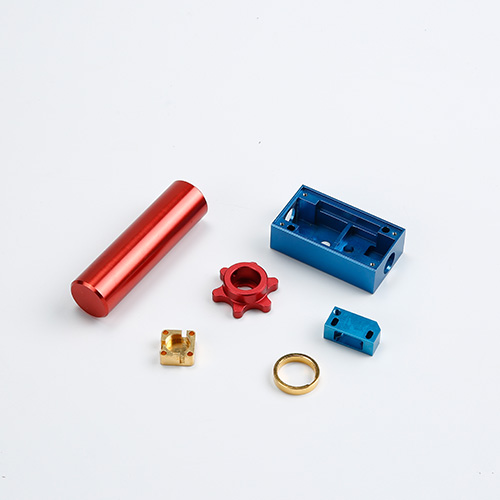In modern manufacturing, fast proofing and rapid production of plastic parts are essential. With the shortening of product life cycle and the rapid change of market demand, enterprises need to have the ability to respond quickly to the market. This article will detail the key technologies and methods for rapid proofing and rapid production of plastic parts, and explore how to optimize these processes to improve efficiency and reduce costs.

First, rapid proofing technology
1. 3D printing
3D printing is one of the most popular rapid proofing techniques. It can directly manufacture plastic parts according to CAD models, fast and low cost. Common 3D printing technologies are FDM (melt deposition molding), SLA (light curing molding) and SLS (selective laser sintering). Each technology has its advantages and limitations, and choosing the right 3D printing technology depends on the specific application needs.
1. CNC machining
CNC machining is a high precision fast proofing method. By cutting the plastic block with a CNC machine tool, the required parts can be quickly manufactured. CNC machining is suitable for producing parts with high precision and complex structure, but the relative cost is high.
1. Vacuum compound mold
Vacuum remolding is a method of copying small batch plastic parts using silicone molds. First, the prototype is made by 3D printing or CNC machining, and then the silicone material is made into a mold, and multiple plastic parts are made through the pouring process. Vacuum remolding has low cost, high efficiency and is suitable for small batch production.
Second, rapid production methods
1. Injection molding
Injection molding is the main method of mass production of plastic parts. It is cooled by heating and melting plastic particles into molds
It can efficiently produce a large number of plastic parts with high consistency. In order to achieve rapid production, the following measures can be taken:
· Optimize mold design: Good mold design can shorten the molding cycle and improve production efficiency. For example, multi-cavity molds can be used to form multiple parts at once.
Automated production lines: The introduction of automated equipment such as robots and automated assembly lines can reduce human intervention and increase production speed.
· Efficient cooling system: The cooling system of the mold is optimized to cool the plastic faster and shorten the molding cycle.
1. Quick mold change
In the multi-variety and small-batch production, rapid mold change technology is particularly important. By adopting a rapid die change system, downtime can be significantly reduced and production flexibility increased. The main methods include:
· Standardized mold substrate: The use of standardized mold substrate can simplify the mold change process.
· Fast clamping system: With a fast clamping system, the mold can be fixed and disassembled quickly.
· Automatic die changing system: The introduction of automatic die changing system can further improve the speed and accuracy of die changing.
Third, optimize the rapid proofing and production strategy
1. Concurrent engineering
Concurrent engineering refers to the process of product development, design, process, manufacturing and other aspects of the synchronization, rather than sequential. Through parallel engineering, the development cycle can be shortened and the time to market can be accelerated.
1. Virtual simulation
The use of computer simulation technology can simulate and optimize the process flow before the actual production, find and solve problems in advance, and avoid rework and delay in production. Commonly used simulation software include Moldflow, ANSYS and so on.
1. Supply chain management
Optimizing supply chain management can ensure the timely supply of raw materials and parts and avoid production delays caused by supply chain problems. By working closely with suppliers and adopting Just-In-Time (JIT) production models, the supply chain can be more flexible and responsive.
Iv. Case analysis
1. Case 1: Rapid proofing of an auto parts enterprise
An auto parts company uses 3D printing technology for rapid proofing, successfully shortening the development cycle of new products from the traditional 6 months to 3 months. By optimizing design and process flow, the company not only improved product quality, but also significantly reduced development costs.
1. Case 2: Rapid production of a consumer electronics company
A consumer electronics company realized the rapid production of small-batch and multi-variety products by introducing automated production lines and rapid mold change systems. The company has increased production efficiency by 30 percent and reduced time to market by 50 percent.
V. Conclusion
Fast proofing and fast production is the key to improve the competitiveness of modern manufacturing industry. By adopting advanced technologies and optimization strategies, enterprises can respond to market demands faster, improve production efficiency and reduce costs. In the implementation of these technologies and strategies, it is necessary to combine the actual situation of the enterprise to choose the appropriate scheme.
Are you looking for a plastic parts manufacturer?
NICE is a leading company specializing in rapid proofing and rapid production of plastic parts. We have advanced equipment and rich experience to provide customers with high quality and efficient plastic parts manufacturing services. Whether it's 3D printing, CNC machining or injection molding, we can meet your needs. Through continuous innovation and optimization, we are committed to providing quality products and services to our customers. Choose Jucheng precision, you will have unparalleled production advantages and market competitiveness.